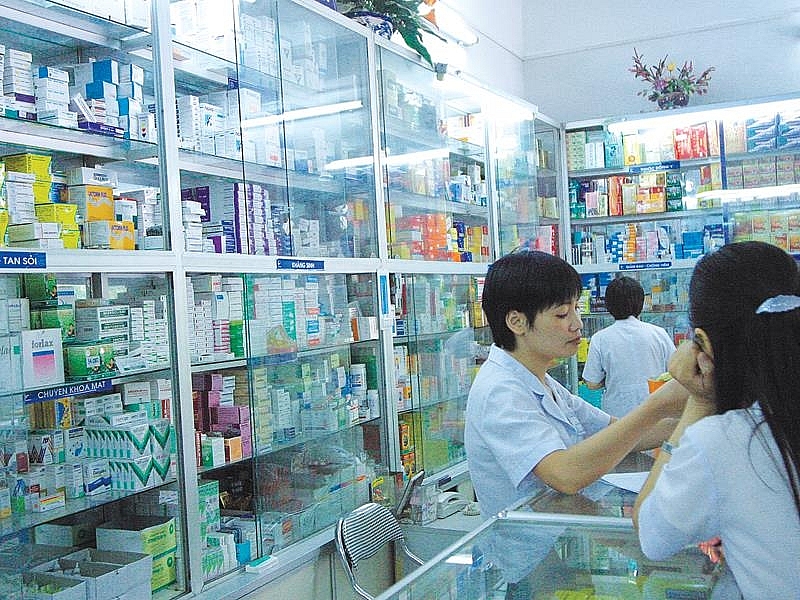Traphaco fares poorly in optimising profit through financial tools
 |
| The total asset value of Traphaco was about $69 million at the end of 2018 |
Fairly safe financial structure
According to Traphaco’s 2018 fourth quarter financial statement, the company’s total asset value fetched VND1.59 trillion ($69 million) by the end of 2018, a slight increase compared to early 2018.
Its debt volume rose by 23.5 per cent on-year to reach VND483 billion ($21 million) which was still low compared to its VND1.107 trillion ($48 million) in total equity capital.
This is alleged as a relatively safe financial structure. Before last year, the company’s debt over equity ratio was often more than 30 per cent. Accordingly, it stood at 34 per cent in 2015, modestly rising to 35.8 per cent in 2016 before slightly retreating to 34.9 per cent in 2017.
It rose to 43.6 per cent last year. According to Hoang Anh Tuan, senior investment advisor at privately-held securities firm VNDirect, Traphaco’s higher debt ratio this year came in the wake of the company’s construction of its new VND477 billion ($20.7 million) production factory in the northern province of Hung Yen, which consists of three workshops and five production lines.
Accordingly, last year its long-term debts jumped 17 times from a mere VND10 billion ($434,700) early on the year to nearly VND170.5 billion ($7.4 million) by the year-end. The financial cost, however, stood only at VND12.2 billion ($530,000) last year.
Not using financial leverage tool effectively?
With respect to financial management, the advantage of financial leverage is often mentioned, and it can be used as a tool to help companies boost revenue and long-term profit.
Traphaco, however, seems to be too cautious in using the financial leverage tool to bolster business performance as by the end of last year both the short-term and long-term debt volume of the company stood at about VND207 billion ($9 million) and its interest expense was VND12.2 billion ($530,000).
| According to the Drug Administration under the Ministry of Health, the drug value from local pharmaceutical firms only accounts for 46.6 per cent of total drug value used in the economy. |
These figures are comparatively low compared to the company’s revenue and profit figures, only equal to 0.68 per cent of its total revenue and 5.7 per cent of its net profit.
Based on the company’s current charter capital, if the company’s debt volume was quadrupled, it would still be lower than the company’s equity, which puts it in the safe zone according to corporate financial management common practices.
Even in this case, the company only needs to slightly raise its net revenue to offset the surplus financial costs.
Common situation of pharmaceutical firms
In fact, Traphaco carries a common feature with many other pharmaceutical firms –it reports a low debt ratio. This may stem from the fact that many leaders at pharmaceutical firms were specialists in the field in the past, so they put prudence and safety above all.
According to investment advisor Tuan from VNDirect, most listed pharmaceutical firms report modest debt ratios, such as Imexpharm (ticker IMP), Pymepharco (PME), Domesco (DMC), and Hau Giang Pharmaceutical JSC (DHG).
Low debt ratio is an advantage for these firms as it signifies safe business operations, yet it is also an obstacle as when assessing the governance of a business takes into account its ability to mobilise diverse resources.
The room for expansion for local pharmaceuticals is still immense. According to the Drug Administration under the Ministry of Health, the value of drugs produced by local pharmaceutical firms only accounts for 46.6 per cent of the total value of drugs used in the economy.
Meanwhile, local pharmaceutical firms posted a 10.2 per cent rise in their drug production value last year, which was lower than the 11.2 per cent hike in used drug value across the country.
What the stars mean:
★ Poor ★ ★ Promising ★★★ Good ★★★★ Very good ★★★★★ Exceptional
Related Contents
Latest News
More News
- Vietnam’s green transition demands collective financial action (December 15, 2025 | 12:00)
- VIR workshop highlights capital and policy for sustainable development (December 15, 2025 | 11:00)
- National Assembly approves pilot mechanisms to accelerate major projects in Hanoi (December 12, 2025 | 11:29)
- Vietnam eases policy approval requirements, simplifies foreign and outbound investments (December 11, 2025 | 17:53)
- Unpacking new momentum in Vietnam’s M&A market (December 10, 2025 | 09:59)
- Forum honours outstanding M&A deals, strategies, and advisory firms (December 09, 2025 | 18:22)
- Vietnam enters defining phase of M&A growth (December 09, 2025 | 17:00)
- Vietnam’s M&A market opens new opportunities amid strong economic momentum (December 09, 2025 | 15:00)
- Vietnam M&A Forum 2025: new position, new momentum (December 09, 2025 | 14:30)
- FDI in Vietnam jumps on additional capital and share purchases (December 09, 2025 | 13:56)

 Tag:
Tag:



























 Mobile Version
Mobile Version